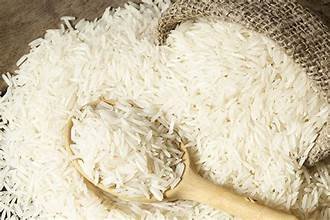Hyderabadi Biryani Recipes

1. Introduction to Hyderabadi Biryani
1.1 The History of Biryani in Hyderabad
Hyderabadi Biryani is not just a dish; it is a culinary legacy that reflects the rich history and culture of Hyderabad. The origins of biryani in this region can be traced back to the Mughal era, where it was introduced by the Mughals who brought their culinary traditions to India. The dish evolved over the years, incorporating local flavors and ingredients, making it a unique representation of Hyderabadi culture.
The cultural significance of biryani in Hyderabad is immense. It is often served during festivals, weddings, and special occasions, symbolizing hospitality and celebration. The influence of Mughal cuisine is evident in the use of aromatic spices and the meticulous cooking techniques that have been passed down through generations.
1.2 Key Ingredients in Hyderabadi Biryani
The magic of Hyderabadi Biryani lies in its ingredients.
Types of rice used: Basmati rice is the star of the show, known for its long grains and fragrant aroma. It is essential for achieving the perfect texture.

Essential spices and herbs: A blend of spices such as cardamom, cloves, cinnamon, and saffron, along with fresh herbs like mint and coriander, create the signature flavor profile.

Meat options: Traditionally, biryani is made with chicken or mutton, but there are also delicious vegetarian alternatives that use paneer or mixed vegetables.

1.3 The Cooking Techniques Behind Biryani
The preparation of Hyderabadi Biryani involves several intricate cooking techniques.
-
- Dum cooking method: This slow-cooking technique involves sealing the pot with dough to trap steam, allowing the flavors to meld beautifully.
-
- Layering and marination processes: The meat is marinated with spices and yogurt, enhancing its tenderness and flavor. Layering the marinated meat with partially cooked rice is crucial for even cooking.
-
- Importance of slow cooking: Slow cooking allows the spices to infuse the rice and meat, resulting in a rich and aromatic dish.
2. Classic Hyderabadi Biryani Recipes
2.1 Hyderabadi Chicken Biryani
Ingredients:
-
- 500g chicken, cut into pieces
-
- 2 cups basmati rice
-
- 1 large onion, thinly sliced
-
- 2 tomatoes, chopped
-
- 1 cup yogurt
-
- Spices: cardamom, cloves, cinnamon, bay leaf
-
- Fresh herbs: mint and coriander
-
- Salt to taste
Preparation Steps:
-
- Marinate the chicken with yogurt, spices, and salt for at least 2 hours.
-
- Fry the onions until golden brown and set aside.
-
- Cook the marinated chicken until tender, then layer it with partially cooked rice.
-
- Seal the pot and cook on low heat for 30-40 minutes.
Tips for Perfect Marination:
-
- Use fresh yogurt for a tangy flavor.
-
- Marinate overnight for deeper flavor.
Serving Suggestions:
Serve with raita (yogurt sauce) and salad for a complete meal.
2.2 Hyderabadi Mutton Biryani
Unique Aspects of Mutton Preparation:
Mutton requires a longer cooking time compared to chicken, which allows the flavors to develop fully.
Cooking Time and Temperature Considerations:
Cook mutton on low heat for about 1.5 hours to ensure it becomes tender.
Pairing with Raita and Salad:
Mutton biryani pairs beautifully with a cooling cucumber raita and a fresh salad to balance the richness.
2.3 Vegetarian Hyderabadi Biryani
Substitutes for Meat in Biryani:
Use paneer, mixed vegetables, or even mushrooms for a hearty vegetarian option.
Cooking Techniques for Vegetables:
Sauté vegetables before layering them with rice to enhance their flavor.
Flavor Enhancements with Nuts and Dried Fruits:
Add cashews and raisins for a touch of sweetness and texture.
3. Regional Variations of Hyderabadi Biryani
3.1 Kacchi Biryani
Definition and Preparation Method:
Kacchi biryani is made with raw marinated meat layered with uncooked rice, allowing the meat to cook with the rice.
Differences from the Cooked Biryani:
Unlike Pakki biryani, where the meat is pre-cooked, Kacchi biryani offers a unique flavor as the meat infuses the rice during cooking.
Popular Occasions for Serving:
Often served at weddings and special gatherings, Kacchi biryani is a showstopper.
3.2 Pakki Biryani
Characteristics of Cooked Biryani:
In Pakki biryani, the meat is cooked separately before being layered with rice, resulting in a different texture and flavor.
Step-by-Step Cooking Process:
-
- Cook the meat with spices until tender.
-
- Partially cook the rice and layer it with the meat.
-
- Seal and cook on low heat.
Variations in Spices and Flavors:
Different regions may use varying spices, leading to unique flavor profiles.
3.3 Other Regional Influences
Influence of Neighboring States:
Biryani has absorbed influences from neighboring states, leading to diverse interpretations.
Fusion Biryani Recipes:
Innovative recipes combine local ingredients with traditional methods, creating exciting new dishes.
Unique Local Ingredients:
Incorporating local spices and herbs can give biryani a distinct twist.
https://youtube.com/shorts/OMrJ8AtOExU?si=pUhrjFWeXLpuBmNc
4. Tips for Perfecting Your Biryani
4.1 Choosing the Right Rice
Types of Rice Suitable for Biryani:
Basmati rice is preferred for its aroma and long grains.
Importance of Soaking and Rinsing:
Soak the rice for at least 30 minutes to ensure even cooking and prevent breakage.
Cooking Rice to the Right Texture:
Cook the rice until it is 70% done before layering it with the meat.
4.2 Marination Secrets
Duration and Ingredients for Marination:
Marinate for at least 2 hours, using yogurt and spices to tenderize the meat.
How Marination Affects Flavor:
Proper marination enhances the overall taste and tenderness of the meat.
Common Mistakes to Avoid:
Avoid over-marinating, which can make the meat mushy.
4.3 Serving and Presentation
Traditional Serving Methods:
Biryani is often served in a large pot, allowing guests to serve themselves.
Garnishing Tips for Visual Appeal:
Garnish with fried onions, fresh herbs, and boiled eggs for a beautiful presentation.
Accompaniments that Enhance the Meal:
Serve with raita, salad, and pickles to complement the flavors.
5. Biryani in Modern Cuisine
5.1 Biryani in Restaurants vs. Home Cooking
Differences in Preparation and Taste:
Restaurant biryani often has a richer flavor due to the use of more spices and ghee.
Popular Biryani Restaurants in Hyderabad:
Some renowned places include Paradise, Bawarchi, and Shah Ghouse.
Home-Cooked Biryani: A Personal Touch:
Home-cooked biryani allows for customization and personal flair.
5.2 Healthier Biryani Options
Substituting Ingredients for Health:
Use brown rice or quinoa for a healthier base.
Low-Calorie Biryani Recipes:
Explore recipes that use less oil and leaner cuts of meat.
Nutritional Considerations:
Be mindful of portion sizes and balance with vegetables.
5.3 Biryani Around the World
Global Adaptations of Biryani:
Biryani has found its way into various cuisines, each adding its unique twist.
Popular Biryani Dishes in Other Countries:
From the spicy biryanis of Pakistan to the coconut-infused versions in Malaysia, the dish has many faces.
Cultural Significance in Different Regions:
Biryani is celebrated worldwide, often associated with gatherings and celebrations.
Conclusion
Hyderabadi Biryani is more than just a meal; it is a celebration of culture, history, and flavors. Whether you prefer the classic chicken, the rich mutton, or a vibrant vegetarian version, there is a biryani for everyone. So, gather your ingredients, embrace the cooking techniques, and embark on a culinary journey that pays homage to this beloved dish.
FAQs
What is the difference between Kacchi and Pakki Biryani?
Kacchi biryani uses raw marinated meat layered with uncooked rice, while Pakki biryani involves pre-cooked meat.
Can I make Hyderabadi Biryani without meat?
Yes, you can use vegetables or paneer as substitutes for a delicious vegetarian biryani.
What are the best side dishes to serve with biryani?
Raita, salad, and pickles are excellent accompaniments to enhance the meal.
How can I store leftover biryani?
Store in an airtight container in the refrigerator for up to 3 days. Reheat before serving.
What are some common mistakes to avoid when making biryani?
Avoid overcooking the rice, under-marinating the meat, and not sealing the pot properly during cooking.
